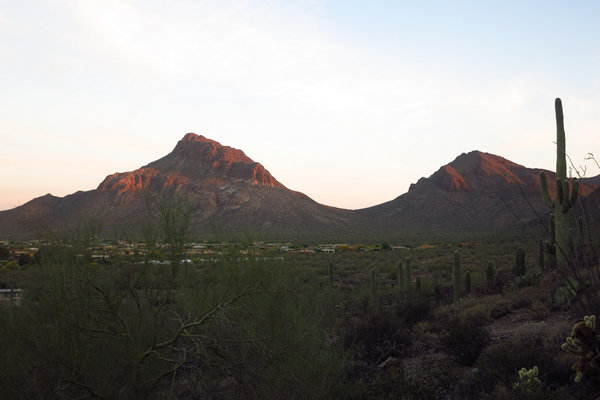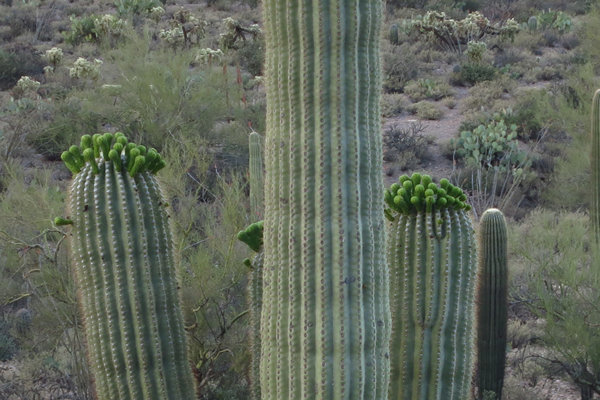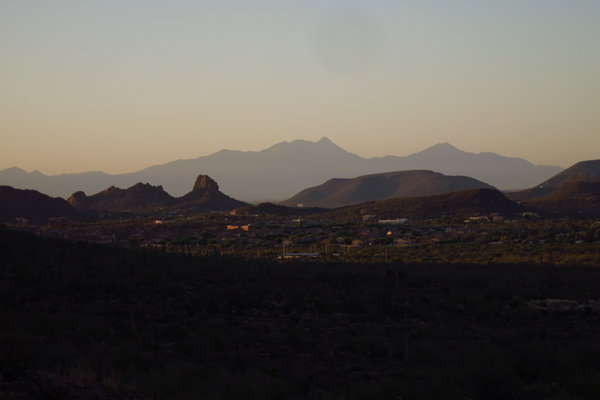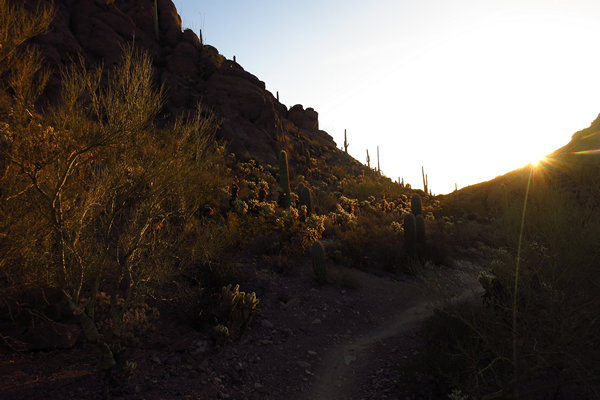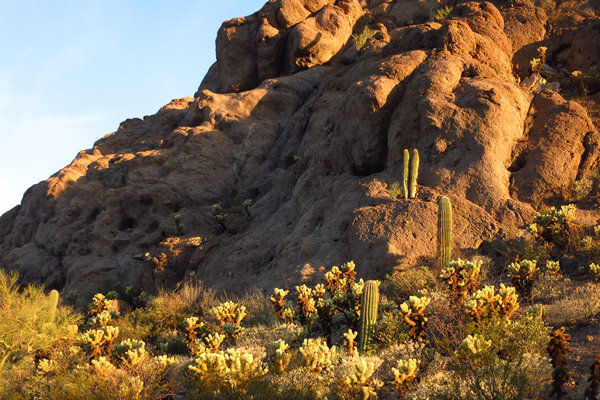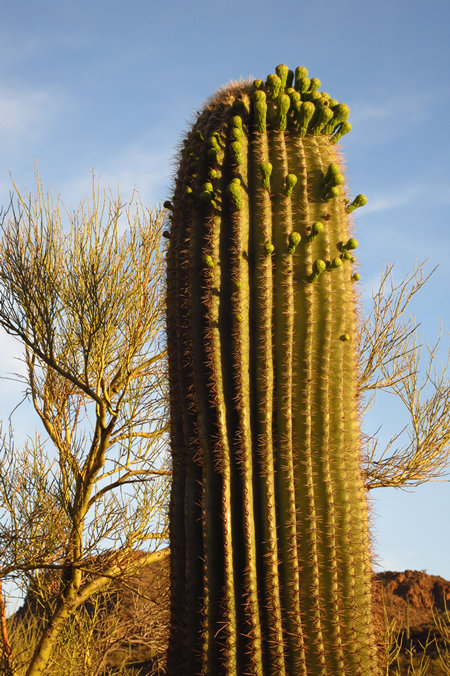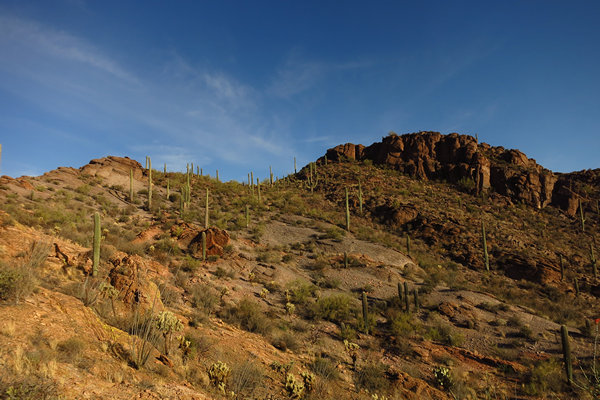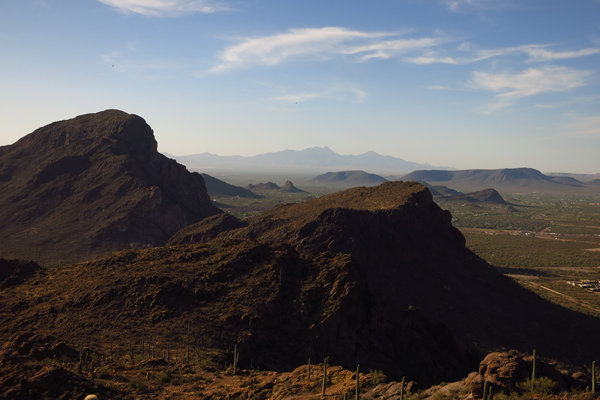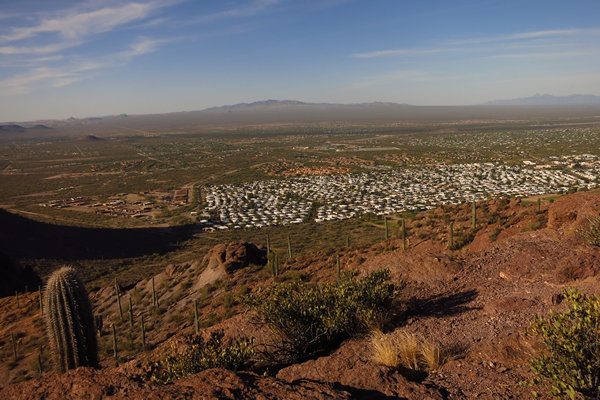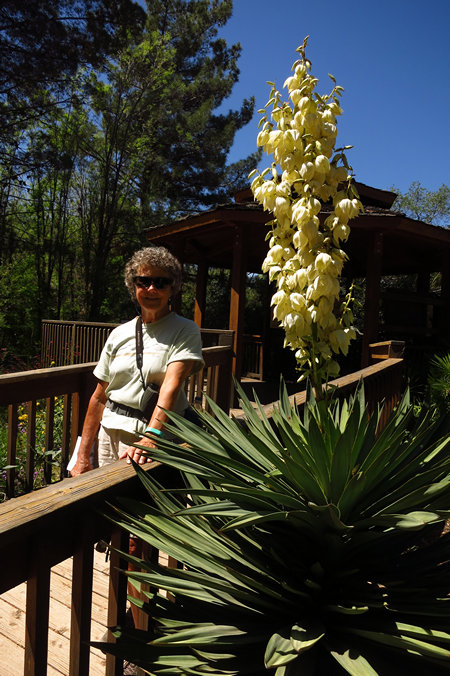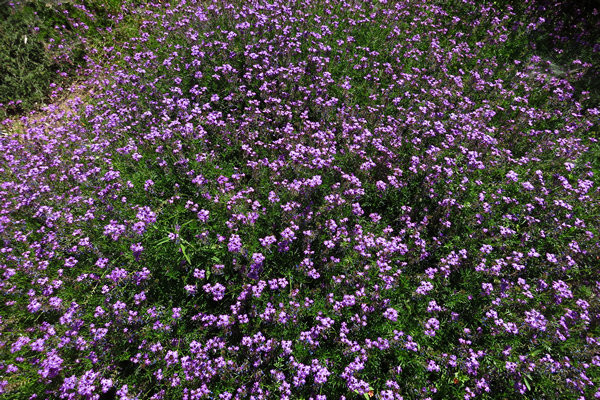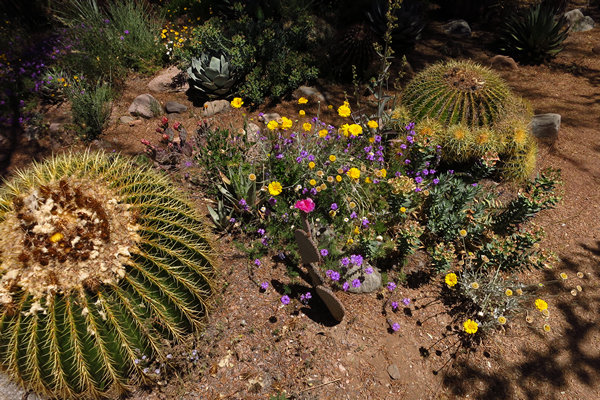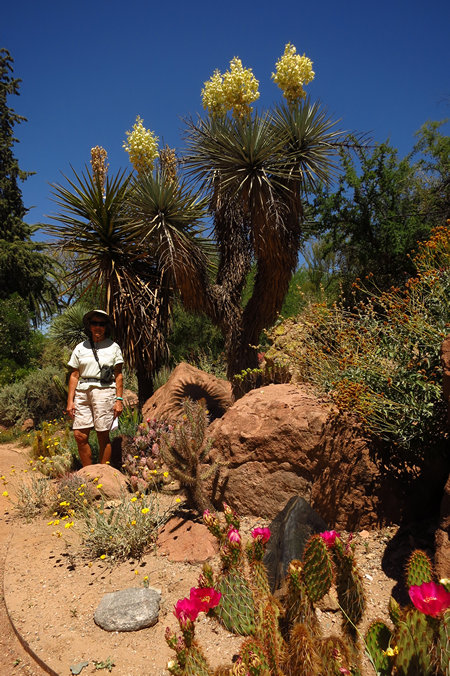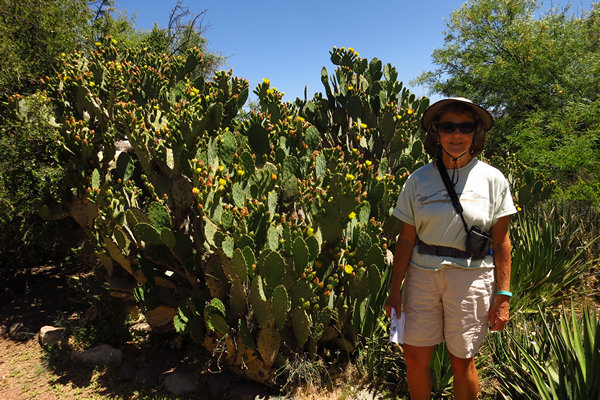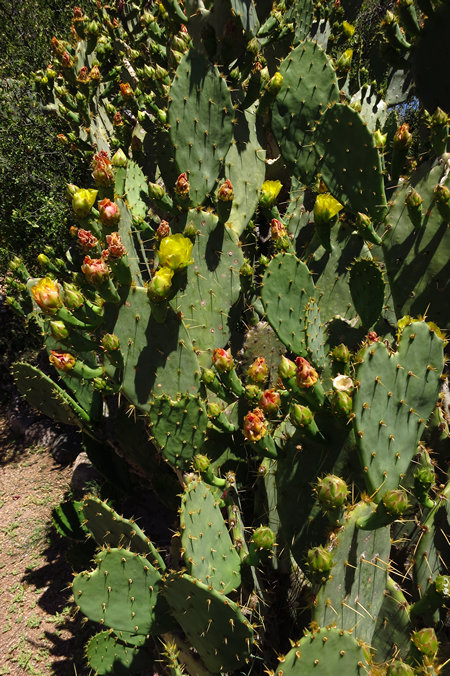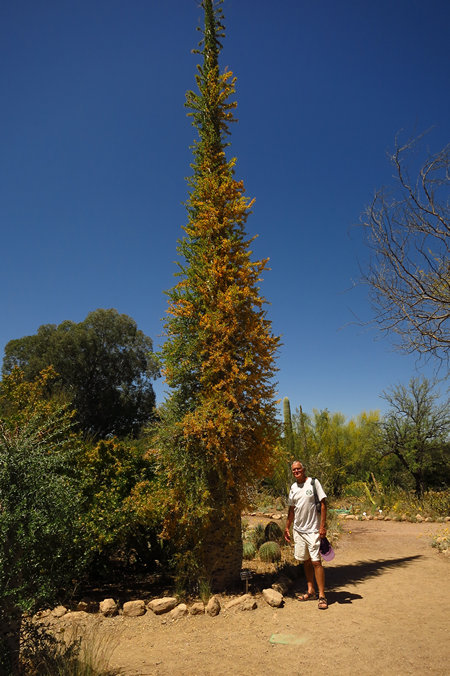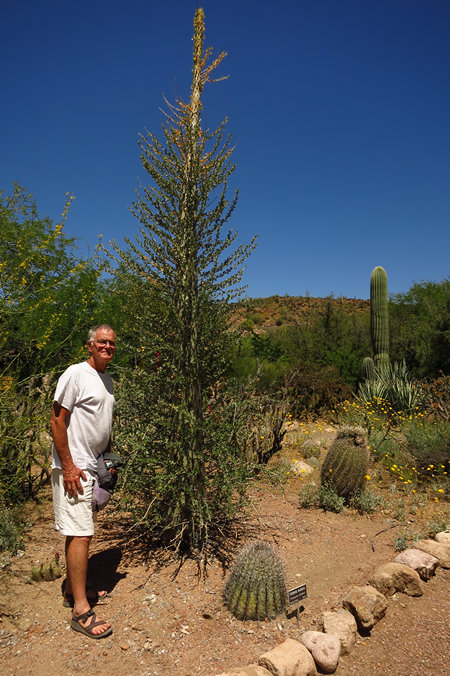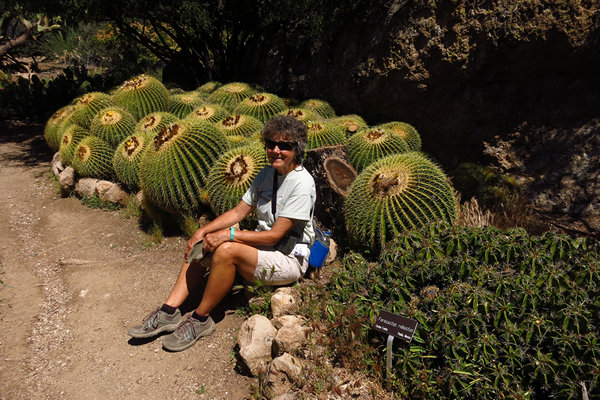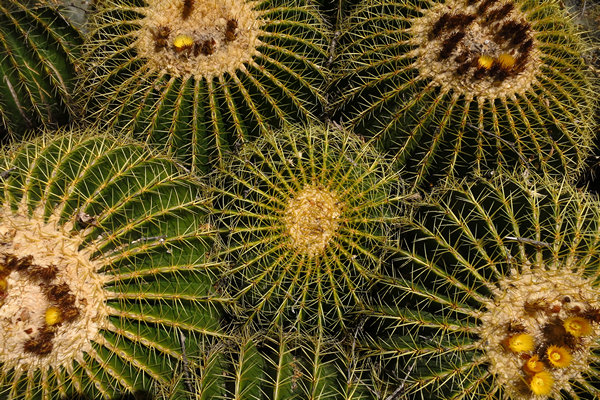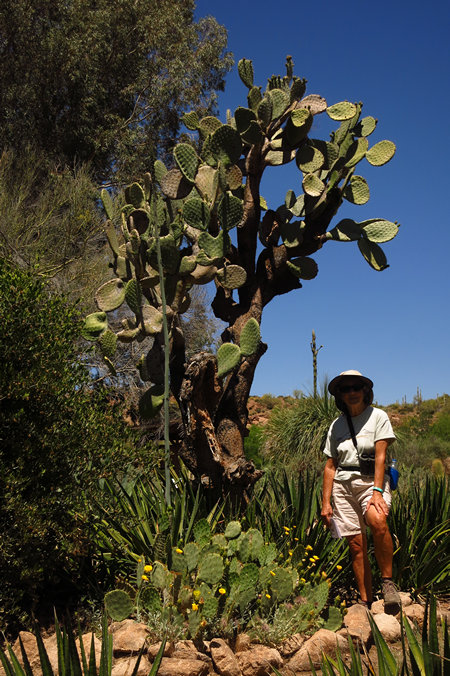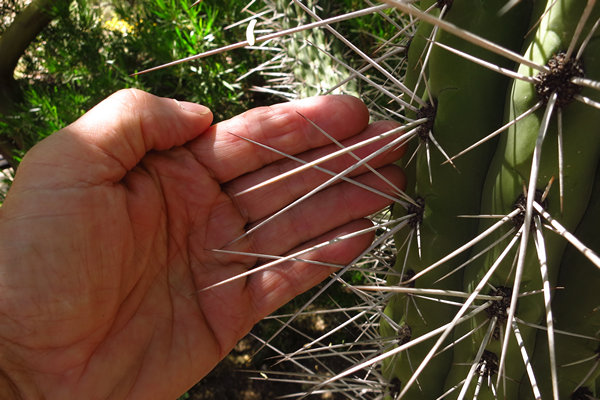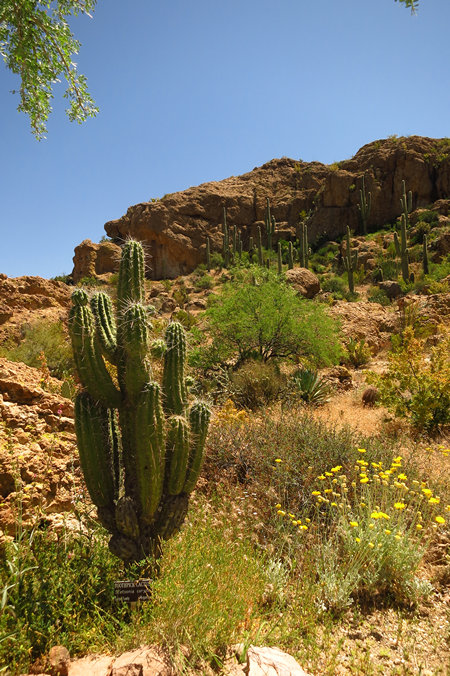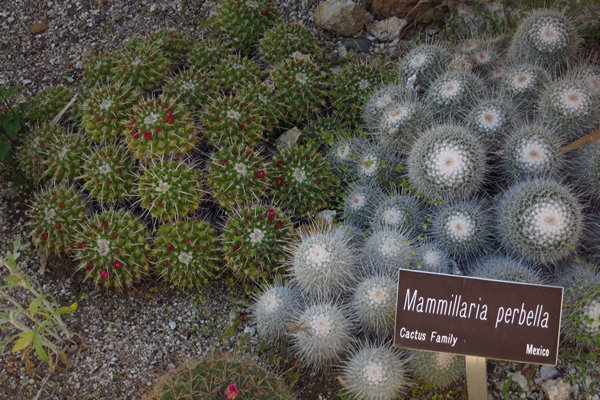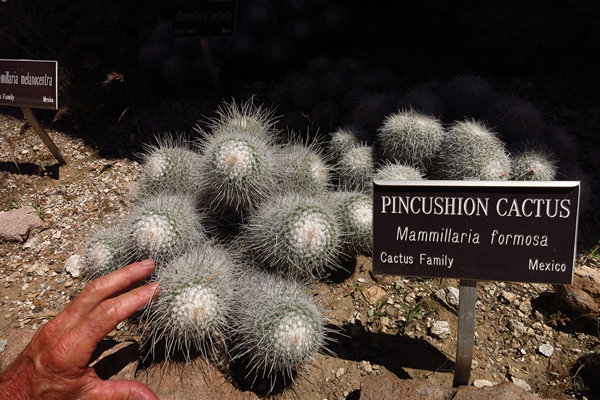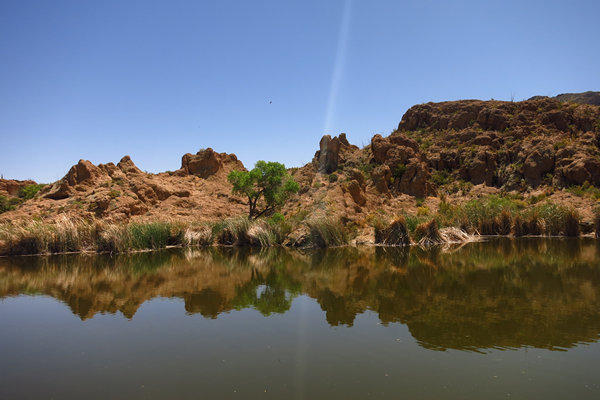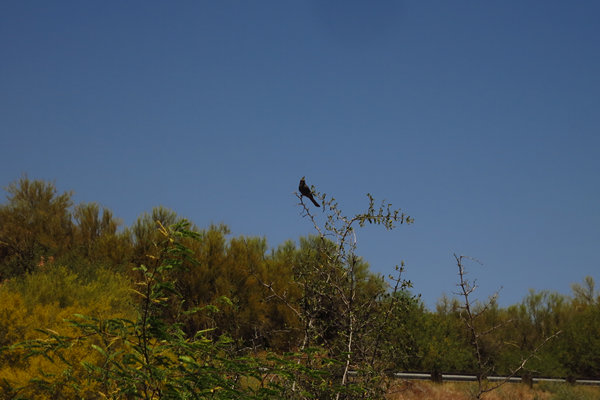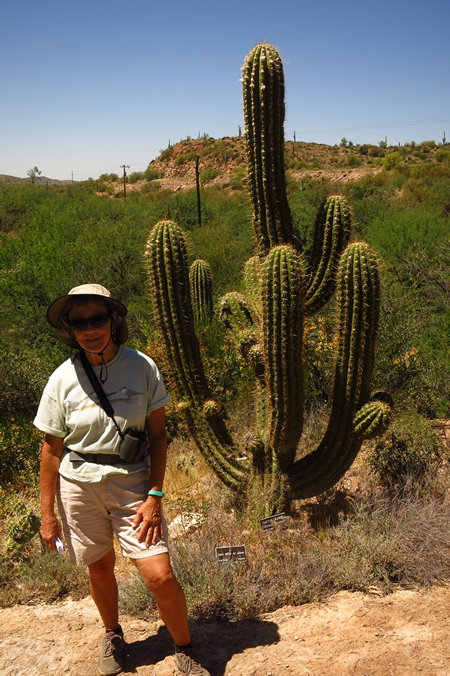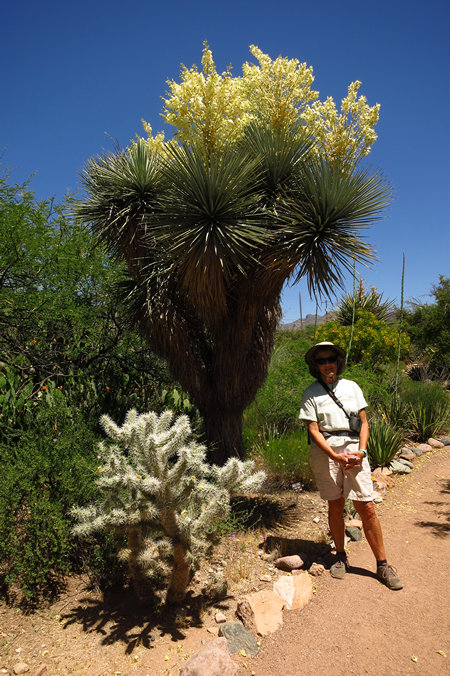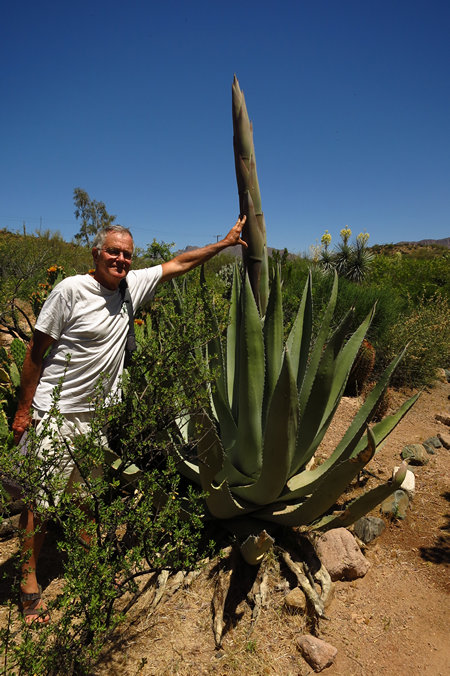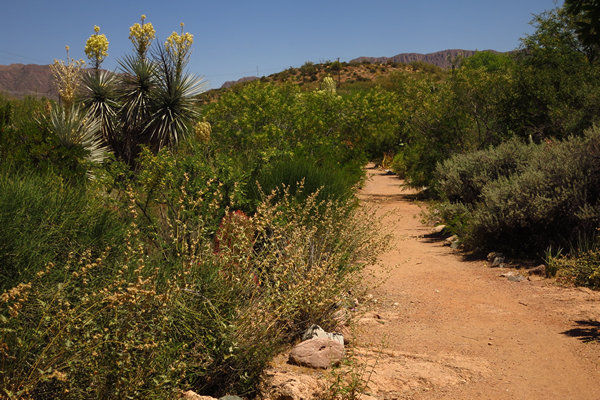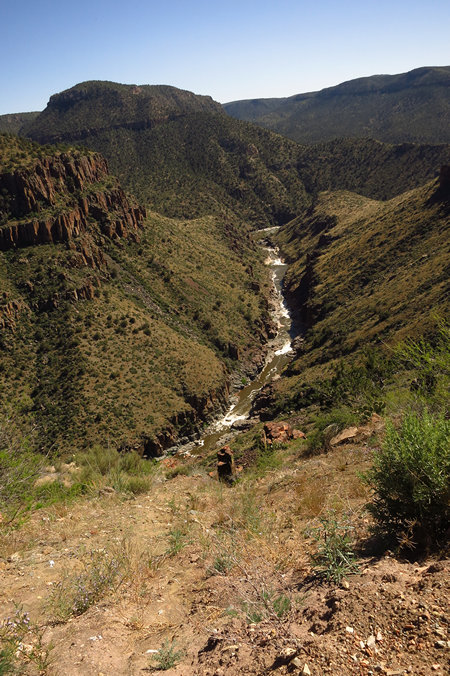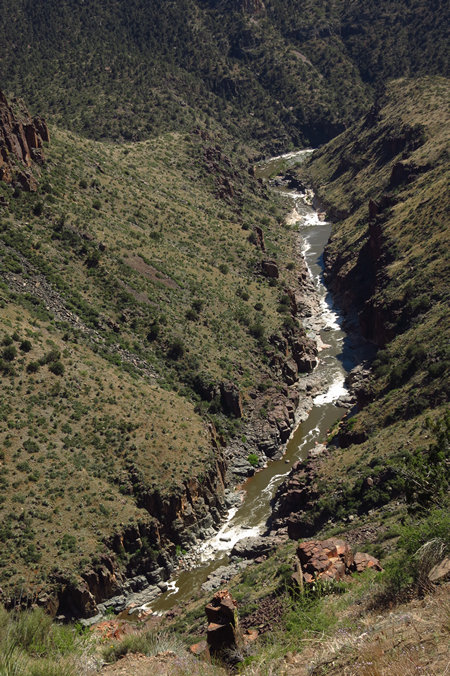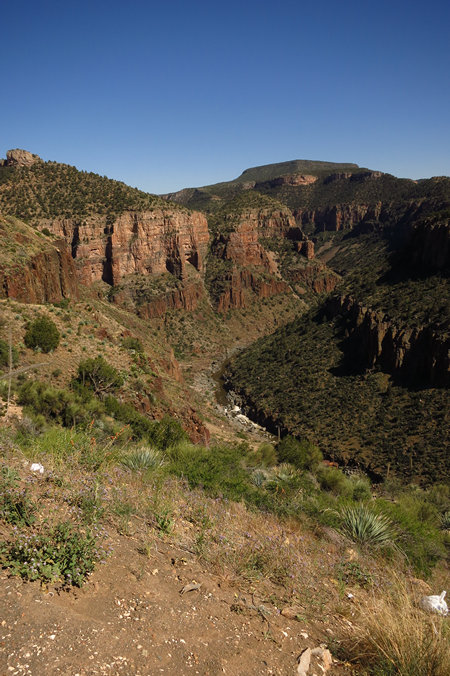Mike Breiding's Epic Road Trips ~2017~
Tucson to Wheeling
Wrapping Up Our Sixth Winter in the Tucson Mountains
Our Last Day and Last Hike in the Tucson Mountains
April 17th: Our Last Day and Last Hike in the Tucson Mountains
Wrapping Up Our Sixth Winter in the Tucson Mountains
April in the Tucson area can get a bit toasty so today Betsy and I hit the trail at the crack of 6:00 am in order to avoid the heat.
We took one of our favorite hikes up to Krein Summit which is in our back yard - the 20,000 acre Tucson Mountain Park.
We don't often get out this time of day so I took the opportunity to take some snaps.
Click on the photos below for a larger image.
Looking to the northwest we could see Golden Gate and Brens mountain. The Yetman trail climbs up to the saddle, crosses over and then drops down to Gates Pass.
The Saguaro have been responding to the plentiful rains and warmth and were pushing lots of flower buds.
Looking to the south we could see Mount Wrightson and Hopkins in the Santa Rita mountains with Madera Canyon cutting down the middle.
In the foreground (L-R) are Beehive Peak, Red Butte and the tail end of Black Mountain. These are the features that make up the southern end of the Tucson Mountains.
As we approached Starr Pass the rising sun was lighting up the Teddy Bear Cholla.
It was right about here, while on a previous hike, I spotted a Grey Fox scrambling up the rock face where it quickly disappeared into one of the openings.
The trail took us through Starr Pass between Big and Little Cat Mountains. As we climbed to the saddle we left the deep shade of the tight passage and found the sun waiting for us.
As we meandered along we saw more heavily budded Saguaros. We hate to miss seeing this bloom but springtime in the Appalachians is calling us.
As we start the climb to Krein Summit, the gained elevation lays out Starr Pass before us.
After more elevation gain we could see the summit of Krein which is on the right.
Here we have Big and Little Cat with Starr Pass making the slice between them. In the distance we once again got nice views of Beehive Peak, Red Butte, Black Mountain and the Santa Ritas.
Home Sweet Home!
Now you know why we call Tucson Mountain Park our "back yard".
Soon we will be leaving these mountains behind and heading east to West Virginia. We are planning a few stops along the way and we hope you will join us as we explore.
See you then...
Mike and Betsy
**********************************
Part 2
April 18th: A short tour of Boyce Thompson Arboretum State Park
and on to the Land of the Dinosaurs.
We finally departed Tucson Estates around 8:00 am and then started the always annoying drive north through the clotted roadways that head out of town and through Marana and Oro Valley.
We were very glad to finally see the wide open spaces of Oracle and beyond. No traffic, no shopping malls, no car washes - just beautiful scenery. Ahhh...
Today we drove up SR 77 north past the community of Oracle and then through the numerous and now mostly defunct boom and bust mining towns of Mammoth and Winkleman along with Hayden, Kearny and Ray which are along SR 177. Here one sees the massive lunar landscapes of the old mine works.
When SR 177 intersected US 60, we jogged west for a few miles to today's main attraction: Boyce Thompson Arboretum.
I first visited the Arboretum with my buddy John Williamson on January 13th 2016. John and I spent half the day poking around all the nooks and crannies and enjoying all the diverse and interesting plant specimens. You can read the report and look at the photos for that visit here.
Today's visit would be shorter. By the time Betsy and I arrived it was nearly 11:00 and the temp was in the low 80s and climbing. Betsy had not been there before so I tried my best to show her some of what the arboretum has to offer. We saw a lot and had a good time. Here are some pics of our visit.
I have a small clipboard in the van which has picked up a few random stickers from previous trips. But the AZ state parks image at the bottom is not a sticker. It was a parks pass given to us by hiking buddies Mark and Kathy. Thanks!!!
There are some nice yucca and agave specimens at the Boyce Thompson Arboretum and we were lucky to catch some of them in bloom.
When John and I visited Boyce Thompson Arboretum in January there were no perennials to see. Now the place was awash with them.
What a nice medley of desert beauties!
WOW!
We saw this plant everywhere but never found an ID label to tell us what it is.
There were many species of Opuntia in bloom and this is one of them.
Most of the Opuntia were in this blooming state - some past, some still buds and some in full bloom.
The Mother of All Boojums!
We first saw this weird looking plant(Fouquieria columnaris)at the Arizona-Sonoran Desert Museum which is just down the road from Tucson Estates where we spend 6 months each year.
Although the specimen above is the tallest I have seen, it is by no means outstanding as this plant can reach heights of 70'. Now that I would like to see!
Fouquieria columnaris, the Boojum tree or cirio (American Spanish,is a tree in the ocotillo family, whose other members include the ocotillos. It is nearly endemic to the Baja California Peninsula (both the northern and southern states), with only a small population in the Sierra Bacha of Sonora, Mexico. The plant's English name, Boojum, was given by Godfrey Sykes of the Desert Laboratory in Tucson, Arizona and is taken from Lewis Carroll's poem "The Hunting of the Snark".
The peculiar distribution pattern of the mainland boojums has led Mexican botanists to conclude that they were probably transplanted to the mainland by the indigenous Seri people, who lived in this area and still live on communal property south of this location. The Seri name for this plant is cototaj. In Seri belief, touching this plant will cause strong winds to blow (an undesirable state). Given this belief, the hypothesis that the Seri people transplanted it is doubtful.
The Fouquieria columnaris trunk is up to 24 cm thick, with branches sticking out at right angles, all covered with small leaves 1.5–4 cm long. (0.6-2.0 inches) They can grow to a height of 20 meters (almost 70 feet). The flowers bloom in summer and autumn; they occur in short racemes, and are creamy yellow with a honey scent.
Source: Wikipedia
A baby Boojum.
We first encountered Golden Barrel cactus (Echinocactus grusonii) in Green Valley AZ. There, and many other places they have been planted widely as landscape plants. This particualr group recently enjoyed the shade of a large mesquite. All that remains now is the stump.
Talk about close quarters!
What happens as the "barrels" grow and expand?
Another nice grouping of Golden Barrel cactus (Echinocactus grusonii). Unlike the previous group these will be shaded from the scorching summer sun.
Although unlabelled I am assuming this opuntia is the so called "Indian Fig" (Opuntia ficus-indica). It too is planted widely as an ornamental.
Opuntia ficus-indica is a species of cactus that has long been a domesticated crop plant important in agricultural economies throughout arid and semiarid parts of the world. It is thought probably to have originated in Mexico. Some of the common English names for the plant and its fruit are Indian fig opuntia, Barbary fig, cactus pear, spineless cactus, and prickly pear, although this last name has also been applied to other less common Opuntia species. In Mexican Spanish, the plant is called nopal, while the fruit is called tuna, which are names also used in American English, especially as culinary terms.
Source: WikiPedia
Here we have the "toothpicks" of the Argentine Toothpick Cactus (Stetsonia coryne).
The distinctive, night-blooming cactus grows thirty feet tall and ten to fifteen feet wide. Its columnar, grayish-green stems are approximately four inches in diameter with toothpick-like, grayish-white spines, protruding from the plant. Its stems develop eight or nine rounded ribs with shallow grooves. The cactus grows at a moderate rate and produces many arms at maturity.
This specimen of the Argentine Toothpick Cactus (Stetsonia coryne) is getting off to a good start and has produced quite a few arms considering its relatively short height of 6'.
Oh how I wish we had room for a cactus garden!
This is Ayer Lake. I am not sure how it is kept watered. Queen Creek meanders through the Arboretum and may provide both surface and ground water for the lake. Perhaps a spring?
The color range on some of the opuntia almost looks artificial.
A nice specimen of Bird of Paradise (Caesalpinia gilliesii). Not to be confused with the bird of paradise which is in the genus Strelitzia.
The flowers are quite distinctive.
It is a striking ornamental plant native to tropical America, mainly Argentina and Uruguay. It is naturalized in Texas, and fairly common in the rest of the southwestern United States, where it is known as bird of paradise bush, desert bird of paradise, yellow bird of paradise, and barba de chivo.
Source: WikiPedia
I have seen this plant naturalizing throughout the Tucson area so it could certainly be considered an invasive non native.
One of our favorite birds - the Phainopepla. Its soft low whistle can be heard just about anywhere this mistletoe is growing. The seeds of the mistletoe are one if its favorite foods.
Its distinctive shape and color make it easy to identify.
A young Cardon cactus (Pachycereus pringlei). The cacti get big!
Pachycereus pringlei, also known as Mexican giant cardon or elephant cactus, is a species of cactus native to northwestern Mexico in the states of Baja California, Baja California Sur, and Sonora. It is commonly known as cardón, a name derived from the Spanish word cardo, meaning "thistle".
Cardon is the tallest cactus species in the world, with a maximum recorded height of 19.2 m (63 ft),with a stout trunk up to 1 m (3.3 ft) in diameter bearing several erect branches. In overall appearance, it resembles the related saguaro (Carnegiea gigantea).
Source: WikiPedia
The cardon cactus pictured here dominate many of the desert areas of Baja California and can reach heights of 20 meters. Some are believed to be over two hundred years old.
This image (above)was taken about seven miles south of the town of Bahia de Los Angeles in Baja California.
Source: Bill Gracey
I can only imagine what it would be like to see these beauties in their wild habitat.
This emerging agave flower bud could easily reach 20 feet in height.
The setting for the Boyce Thomson Arboretum is quite lovely. Many of the paths are labyrinthine and the mature plants hide the other pathways from view. One can easily think they are "out in the middle of nowhere".
By now we were starting to cook so it was off down the road we went.
Our route took us though the Salt River Canyon and the views were quite dramatic.
I would be remiss if I did not mention the gorgeous scenery along the San Pedro river near Oracle. I have never been in this are at springtime and the luxuriant growth of the roadside mesquite and the miles of cottonwood along the river corridor were absolutely beautiful.
Additionally the drive north through Show Low and miles of juniper oak scrubland was a sight to see. When John and I came throught this area in January it was under several feet of snow as you would epxpect since the elevation sits at around 6000' feet.
Here is our Route: Tucson to Holbrook. We arrived in Holbrook about 5:00, checked into the Motel 6 and then drove up the road to find a Happy Hour spot. We unloaded the chairs, cooler, chips and salsa, enjoyed the quiet view to the north and watched a Kingbird "hawk" for its dinner. Then it was dinner of WalMart salads and an evening of webwork, emailing and reading.
Next stop: Petrified Forest National Park - the reason we are in Holbrook. See you then...
~Mike and Betsy
